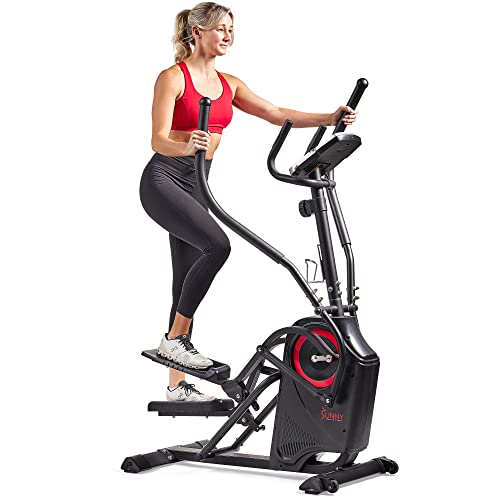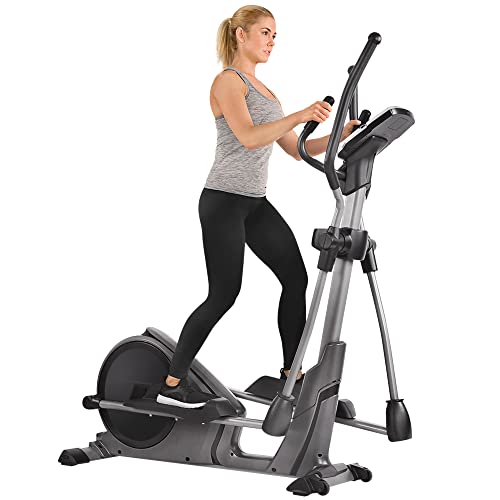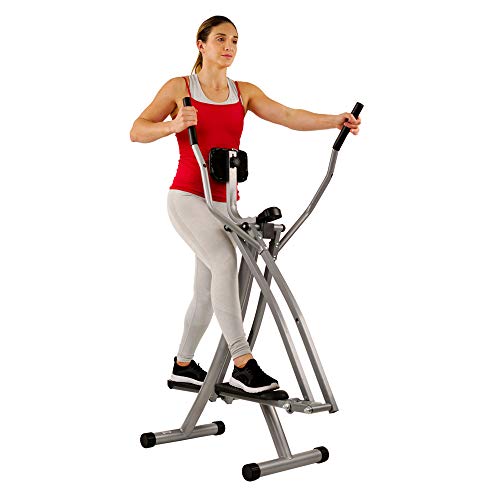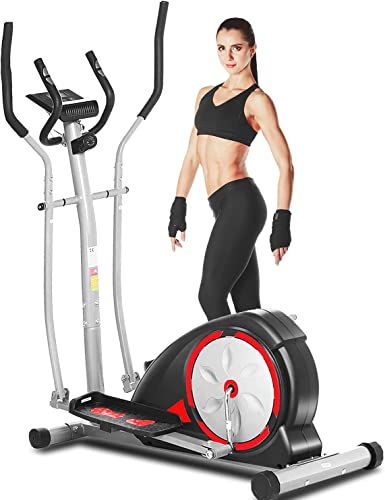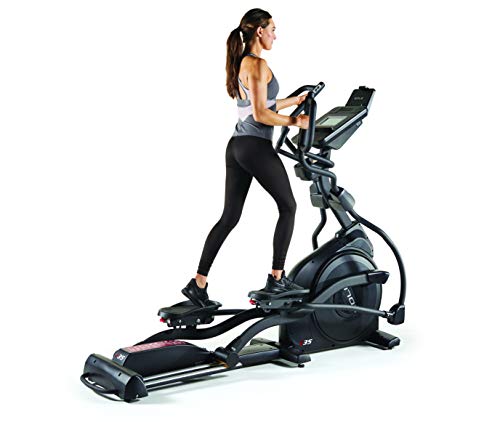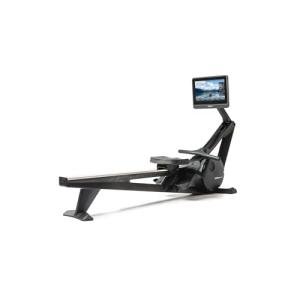Are you struggling to find cardio exercises that don't aggravate your bad knees? You're not alone. Many people face the challenge of maintaining cardiovascular health while dealing with knee pain or injuries. The good news is that there are several low-impact cardio options that can help you stay fit without putting excessive strain on your knees. In this article, we'll explore the 10 best cardio exercises for bad knees, including swimming, cycling, elliptical training, and more. We'll also provide tips on how to modify these exercises to suit your needs and discuss the benefits of each option. By the end of this article, you'll have a better understanding of how to maintain a healthy cardiovascular system without compromising your knee health. So, let's dive in and discover the best cardio exercises for bad knees!
What are the best low-impact cardio exercises for people with bad knees?
If you have bad knees, finding suitable cardio exercises can be a challenge. However, there are several low-impact options that can help you maintain cardiovascular health without putting excessive strain on your joints. Here are some of the best low-impact cardio exercises for people with bad knees:
- Swimming
- Water aerobics
- Cycling (stationary or recumbent)
- Elliptical machines
- Walking (with modifications)
Swimming and water aerobics are excellent choices because the buoyancy of the water reduces the impact on your joints while providing resistance for a good workout. Cycling, either on a stationary bike or a recumbent bike, allows you to get your heart rate up without putting direct pressure on your knees.
Elliptical machines mimic the motion of running without the impact, making them a great option for those with knee problems. If you prefer walking, you can modify your technique by taking shorter strides, using a treadmill with shock absorption, or walking on softer surfaces like grass or a track.
| Exercise | Benefits | Modifications |
|---|---|---|
| Swimming | Full-body workout, low-impact | Use a pool noodle or flotation device for support |
| Water aerobics | Increases flexibility and strength | Perform exercises in chest-deep water |
| Cycling | Improves leg strength and cardiovascular health | Adjust seat height and resistance |
| Elliptical machines | Mimics running motion without impact | Use handles for balance and stability |
| Walking | Improves overall health and fitness | Take shorter strides, use a treadmill with shock absorption |
Table 1: Low-impact cardio exercises for bad knees, their benefits, and modifications.
Remember to always listen to your body and consult with your doctor or a physical therapist before starting any new exercise routine. By incorporating these low-impact cardio exercises into your fitness plan, you can maintain a healthy cardiovascular system without exacerbating your knee problems.
How can swimming help improve cardiovascular health without straining the knees?
Swimming is an excellent low-impact cardio exercise that can help improve cardiovascular health without putting excessive strain on the knees. The buoyancy of the water supports your body weight, reducing the impact on your joints and making it an ideal exercise for people with bad knees. Here are some ways swimming can benefit your cardiovascular health:
- Increases heart rate: Swimming engages large muscle groups, which helps increase your heart rate and improve cardiovascular endurance.
- Provides resistance: Water provides natural resistance, making your muscles work harder without the need for additional weights or equipment.
- Improves lung capacity: The controlled breathing required in swimming can help improve your lung capacity and oxygen intake.
- Reduces inflammation: The gentle, low-impact nature of swimming can help reduce inflammation in the joints, which is particularly beneficial for those with knee problems.
To get the most out of your swimming routine, consider the following tips:
- Start with shorter sessions and gradually increase the duration and intensity of your workouts.
- Use a variety of strokes to engage different muscle groups and prevent boredom.
- Incorporate water-based exercises, such as aqua jogging or pool walking, to add variety to your routine.
- Use flotation devices or a pool noodle for support if needed.
| Stroke | Benefits |
|---|---|
| Freestyle | Engages full body, improves upper body strength |
| Breaststroke | Targets chest, back, and leg muscles |
| Backstroke | Strengthens back muscles and improves posture |
| Butterfly | Provides an intense full-body workout |
Table 2: Different swimming strokes and their benefits.
By incorporating swimming into your cardio routine, you can improve your cardiovascular health, increase muscle strength, and reduce the risk of knee injuries. Remember to start slowly, listen to your body, and consult with a healthcare professional if you experience any pain or discomfort.
Is cycling a good option for people with knee problems?
Cycling can be an excellent low-impact cardio option for people with knee problems. Unlike high-impact exercises like running or jumping, cycling puts less stress on the knees while still providing a good cardiovascular workout. Here are some reasons why cycling may be a good choice for those with bad knees:
- Low-impact: Cycling is a non-weight-bearing exercise, meaning that your joints don't have to support your full body weight during the activity.
- Controlled motion: The circular motion of pedaling helps to strengthen the muscles around the knee joint without putting excessive strain on the knees themselves.
- Adjustable resistance: Most stationary bikes and some outdoor bikes allow you to adjust the resistance, enabling you to customize your workout to your fitness level and knee comfort.
- Improved joint mobility: Cycling can help improve the range of motion in your knee joints, which can reduce stiffness and discomfort.
When cycling with bad knees, consider the following tips:
- Adjust your seat height: Ensure that your seat is at the proper height to minimize knee strain. A general rule is to have a slight bend in your knee when the pedal is at its lowest point.
- Use a recumbent bike: Recumbent bikes have a reclined seat and backrest, which can reduce pressure on the knees and provide additional support for your back.
- Start slowly: Begin with shorter rides at a lower resistance and gradually increase the duration and intensity of your workouts as your knee strength improves.
- Listen to your body: If you experience pain or discomfort while cycling, stop and consult with a healthcare professional.
| Bike Type | Benefits |
|---|---|
| Stationary bike | Allows for controlled environment, easy resistance adjustment |
| Recumbent bike | Provides additional back support, reduces knee strain |
| Outdoor bike | Offers fresh air and varied terrain, requires more balance |
Table 3: Different types of bikes and their benefits for people with bad knees.
Cycling can be a great way to maintain cardiovascular health and strengthen the muscles around your knees without exacerbating existing knee problems. By following these tips and listening to your body, you can enjoy the benefits of cycling while minimizing the risk of further knee injury.
Remember to start slowly, listen to your body, and consult with a healthcare professional before beginning any new exercise routine. By incorporating these low-impact cardio exercises into your fitness plan and following the tips and modifications provided, you can stay fit and active while protecting your knee health.
Don't let bad knees hold you back from achieving your fitness goals. With the right approach and a commitment to low-impact cardio, you can enjoy the many benefits of regular exercise without compromising your joint health. So, choose the exercises that work best for you, stay consistent, and keep moving towards a healthier, happier you!
Can elliptical machines provide an effective cardio workout while being gentle on the knees?
Elliptical machines can indeed provide an effective cardiovascular workout while being gentle on the knees. These low-impact machines simulate the motion of running or walking without the jarring impact on the joints, making them an excellent option for people with bad knees. Here's how elliptical machines can benefit your cardio fitness and knee health:
- Low-impact motion: The smooth, gliding motion of the elliptical machine minimizes the stress on your knees, hips, and ankles, reducing the risk of injury or exacerbating existing knee problems[1].
- Adjustable resistance: Most elliptical machines allow you to adjust the resistance level, enabling you to customize your workout intensity to your fitness level and knee comfort[2].
- Total body workout: Elliptical machines engage both your upper and lower body, providing a comprehensive cardiovascular workout that can help improve your overall fitness[3].
- Improved joint mobility: The continuous motion of the elliptical machine can help improve the range of motion in your knee joints, reducing stiffness and promoting flexibility[4].
To get the most out of your elliptical workout while protecting your knees, consider the following tips:
- Maintain proper form: Keep your back straight, engage your core, and avoid leaning on the handrails for support.
- Start slowly: Begin with shorter workouts at a lower resistance and gradually increase the duration and intensity as your fitness improves.
- Listen to your body: If you experience pain or discomfort in your knees, stop and consult with a healthcare professional.
| Elliptical Machine Benefits | Impact on Knees |
|---|---|
| Low-impact motion | Reduces stress on joints |
| Adjustable resistance | Allows for customized intensity |
| Total body workout | Engages upper and lower body |
| Improves joint mobility | Promotes flexibility and reduces stiffness |
Table 4: Benefits of elliptical machines for cardiovascular health and knee protection.
By incorporating elliptical machine workouts into your fitness routine, you can enjoy an effective cardiovascular exercise that is gentle on your knees, helping you maintain a healthy and active lifestyle without exacerbating knee problems.
$1,549.99
4.81 out of 5 stars2023 E35 Elliptical Gym Equipment with Touchscreen & WiFi
Enhance your workouts with the latest technology on the 2023 E35 Elliptical Gym Equipment featuring Touchscreen & WiFi connectivity
Product information
Product Review Score
Product links
Are there any specific yoga poses that can improve cardiovascular health and strengthen the knees?
While yoga is generally considered a low-impact activity that focuses on flexibility, balance, and strength, certain yoga poses can also provide cardiovascular benefits and help strengthen the muscles around the knees. Here are some specific yoga poses that can improve cardiovascular health and support knee strength:
- Warrior I (Virabhadrasana I): This standing pose strengthens the legs, ankles, and feet while stretching the hips, chest, and shoulders. It also improves balance and stability, which can help protect the knees[1].
- Warrior II (Virabhadrasana II): Similar to Warrior I, this pose strengthens the legs and core while stretching the hips, groins, and shoulders. It can help improve stamina and endurance, contributing to better cardiovascular health[2].
- Chair Pose (Utkatasana): This powerful pose strengthens the thighs, calves, and ankles while engaging the core and improving balance. It can help build endurance and improve circulation, benefiting cardiovascular health[3].
- Bridge Pose (Setu Bandha Sarvangasana): This backbend strengthens the legs, buttocks, and core while stretching the chest, neck, and spine. It can help improve circulation and calm the mind, promoting overall cardiovascular well-being[4].
- Sun Salutations (Surya Namaskar): This series of poses combines standing, balancing, and flowing movements that can raise the heart rate and improve cardiovascular endurance. It also strengthens the legs, arms, and core while promoting flexibility[5].
When practicing yoga for cardiovascular health and knee strength, remember to:
- Focus on proper alignment and technique to avoid strain on the knees.
- Use props, such as blocks or straps, to modify poses as needed.
- Listen to your body and avoid pushing beyond your limits.
- Combine yoga with other low-impact cardio exercises for a well-rounded fitness routine.
| Yoga Pose | Benefits |
|---|---|
| Warrior I & II | Strengthens legs, improves balance and endurance |
| Chair Pose | Builds leg strength, engages core, improves circulation |
| Bridge Pose | Strengthens legs and core, improves circulation |
| Sun Salutations | Raises heart rate, improves cardiovascular endurance |
Table 5: Yoga poses that can improve cardiovascular health and strengthen the knees.
By incorporating these yoga poses into your practice, you can support your cardiovascular health and strengthen the muscles around your knees, helping to prevent injury and maintain joint health.
How can walking be modified to reduce knee strain while still providing a good cardio workout?
Walking is a simple and accessible form of cardio exercise that can be easily modified to reduce knee strain while still providing an effective workout. Here are some ways to modify your walking routine to minimize knee stress and maintain cardiovascular benefits:
- Choose the right surface: Opt for softer surfaces like grass, dirt trails, or rubberized tracks instead of hard surfaces like concrete or asphalt. Softer surfaces absorb more impact, reducing the stress on your knees[1][2].
- Wear supportive shoes: Invest in a pair of walking shoes with good arch support, cushioning, and stability. Proper footwear can help absorb shock and reduce the impact on your knees[1][3].
- Use a treadmill with shock absorption: If you prefer walking indoors, choose a treadmill with built-in shock absorption to minimize the impact on your joints[2].
- Maintain proper posture: Keep your head up, shoulders relaxed, and back straight while walking. Engage your core muscles to support your spine and reduce stress on your knees[4].
- Take shorter strides: Taking shorter, quicker steps can help reduce the impact on your knees compared to longer strides. Focus on maintaining a comfortable, natural gait[1][2].
- Incorporate walking poles: Using walking poles or trekking poles can help distribute your body weight more evenly, reducing the load on your knees and providing additional stability[5].
- Listen to your body: If you experience pain or discomfort in your knees while walking, stop and rest. Consult with a healthcare professional if the pain persists or worsens[1][2].
| Modification | Benefit |
|---|---|
| Softer surfaces | Reduces impact on knees |
| Supportive shoes | Absorbs shock and provides stability |
| Treadmill with shock absorption | Minimizes joint impact |
| Proper posture | Supports spine and reduces knee stress |
| Shorter strides | Reduces impact on knees |
| Walking poles | Distributes weight and provides stability |
Table 6: Modifications to reduce knee strain while walking for cardio exercise.
By implementing these modifications, you can continue to enjoy the cardiovascular benefits of walking while minimizing the risk of knee injury or exacerbating existing knee problems. Remember to start slowly, listen to your body, and gradually increase the duration and intensity of your walks as your fitness improves.
What are the benefits of water aerobics for people with bad knees?
Water aerobics, also known as aqua aerobics or water exercise, is a low-impact form of cardio exercise that offers numerous benefits for people with bad knees. The buoyancy of the water supports body weight, reducing the stress on joints and making it an ideal workout for those with knee problems. Here are some key benefits of water aerobics for people with bad knees:
- Reduced impact on joints: The water's buoyancy supports up to 90% of your body weight, significantly reducing the impact on your knees and other joints compared to land-based exercises[1][2].
- Improved flexibility and range of motion: The water's resistance and warmth can help improve flexibility and range of motion in the knee joints, reducing stiffness and promoting better mobility[3].
- Increased muscle strength: Water provides natural resistance, making your muscles work harder without the need for additional weights. This can help strengthen the muscles around the knees, providing better support and stability[1][4].
- Enhanced cardiovascular fitness: Water aerobics can provide a challenging cardiovascular workout, improving heart health and endurance without putting excessive strain on the knees[2][5].
- Reduced pain and inflammation: The hydrostatic pressure of the water can help reduce swelling and inflammation in the knees, while the warmth of the water can help alleviate pain and promote relaxation[1][3].
To get the most out of your water aerobics routine, consider the following tips:
- Start with shallow water exercises and gradually progress to deeper water as your fitness improves.
- Use aquatic equipment, such as foam noodles or water weights, to add variety and resistance to your workouts.
- Maintain proper form and technique to maximize the benefits and minimize the risk of injury.
- Listen to your body and stop if you experience pain or discomfort in your knees.
| Benefit | Impact on Knees |
|---|---|
| Reduced impact on joints | Minimizes stress on knees |
| Improved flexibility and range of motion | Reduces stiffness and promotes mobility |
| Increased muscle strength | Provides better support and stability |
| Enhanced cardiovascular fitness | Improves heart health without excessive knee strain |
| Reduced pain and inflammation | Alleviates pain and promotes relaxation |
Table 7: Benefits of water aerobics for people with bad knees.
By incorporating water aerobics into your fitness routine, you can enjoy a low-impact, effective cardiovascular workout that is gentle on your knees, helping you maintain an active lifestyle and improve overall joint health.
Can rowing machines offer a low-impact cardio option for those with knee issues?
Rowing machines, also known as ergometers or indoor rowers, can indeed offer a low-impact cardio option for people with knee issues. Rowing is a non-weight-bearing exercise that engages multiple muscle groups, providing a full-body workout while minimizing stress on the joints. Here's how rowing machines can benefit those with knee problems:
- Low-impact motion: Rowing involves a smooth, gliding motion that places minimal stress on the knees, making it a suitable exercise for those with knee pain or injuries[1][2].
- Adjustable resistance: Most rowing machines allow you to adjust the resistance level, enabling you to customize your workout intensity to your fitness level and knee comfort[3].
- Full-body workout: Rowing engages the legs, core, back, and arms, providing a comprehensive cardiovascular workout that can help improve overall fitness and endurance[1][4].
- Improved joint mobility: The repetitive motion of rowing can help improve the range of motion in the knee joints, reducing stiffness and promoting flexibility[2].
To maximize the benefits of rowing while protecting your knees, consider the following tips:
- Maintain proper form: Keep your back straight, engage your core, and avoid rounding your shoulders or slouching.
- Start slowly: Begin with shorter workouts at a lower resistance and gradually increase the duration and intensity as your fitness improves.
- Listen to your body: If you experience pain or discomfort in your knees, stop and consult with a healthcare professional.
- Combine rowing with other low-impact exercises: Incorporate rowing into a well-rounded fitness routine that includes other low-impact activities like swimming or cycling.
| Rowing Machine Benefits | Impact on Knees |
|---|---|
| Low-impact motion | Minimizes stress on joints |
| Adjustable resistance | Allows for customized intensity |
| Full-body workout | Engages multiple muscle groups |
| Improves joint mobility | Promotes flexibility and reduces stiffness |
Table 8: Benefits of rowing machines for low-impact cardio and knee protection.
By incorporating rowing machine workouts into your fitness routine, you can enjoy an effective cardiovascular exercise that is gentle on your knees, helping you maintain a healthy and active lifestyle without exacerbating knee problems.
$1,795.00
4.98 out of 5 starsHydrow Wave Rowing Machine 16" HD Touchscreen & Speakers
Upgrade your home gym with the Hydrow Wave Rowing Machine featuring a 16" HD touchscreen and speakers
Product information
Product Review Score
Product links
Are there any cardio dance workouts that are suitable for people with bad knees?
While high-impact dance workouts like jumping or pivoting can be challenging for people with bad knees, there are several low-impact cardio dance options that can provide an enjoyable and effective workout. Here are some cardio dance workouts suitable for those with knee issues:
- Zumba Gold: This modified version of Zumba is designed for older adults or those with limited mobility. It features lower-intensity moves and less jumping, making it easier on the knees[1].
- Ballroom dancing: Many ballroom dance styles, such as waltz, foxtrot, and rumba, involve smooth, gliding motions that are gentle on the knees. These dances can provide a good cardiovascular workout while improving balance and coordination[2].
- Line dancing: Line dancing often involves simple, repetitive steps that can be easily modified to reduce the impact on the knees. Choose dances with minimal jumping or twisting motions[3].
- Belly dancing: This low-impact dance style focuses on isolated movements of the hips, chest, and arms, placing minimal stress on the knees. It can help improve core strength, flexibility, and cardiovascular endurance[4].
- Chair dancing: For those with more severe knee issues, chair dancing can provide a seated cardio workout that is easy on the joints. Many chair dance routines incorporate upper body movements to raise the heart rate and improve cardiovascular fitness[5].
When participating in cardio dance workouts, remember to:
- Wear supportive shoes with good cushioning to absorb impact.
- Modify moves as needed to reduce knee strain, such as replacing jumps with step-touches.
- Listen to your body and stop if you experience pain or discomfort in your knees.
- Combine dance workouts with other low-impact cardio exercises for a well-rounded fitness routine.
| Dance Workout | Knee-Friendly Features |
|---|---|
| Zumba Gold | Lower-intensity moves, less jumping |
| Ballroom dancing | Smooth, gliding motions |
| Line dancing | Simple, repetitive steps, minimal jumping |
| Belly dancing | Isolated movements, minimal knee stress |
| Chair dancing | Seated workout, easy on joints |
Table 9: Cardio dance workouts suitable for people with bad knees.
By choosing low-impact cardio dance workouts and modifying moves as needed, people with bad knees can enjoy the benefits of dancing for cardiovascular health, flexibility, and overall well-being.
What are some important tips for maintaining healthy knees while performing cardio exercises?
Maintaining healthy knees is crucial for people who want to enjoy the benefits of cardio exercise without exacerbating knee problems or risking injury. Here are some essential tips for keeping your knees healthy while performing cardio exercises:
- Choose low-impact activities: Opt for low-impact cardio exercises like swimming, cycling, elliptical training, and walking to minimize stress on your knees[1][2][3].
- Wear proper footwear: Invest in supportive, well-cushioned shoes designed for your specific activity to absorb shock and reduce the impact on your knees[1][4].
- Maintain proper form and technique: Focus on maintaining proper alignment, posture, and technique during your cardio workouts to avoid placing unnecessary strain on your knees[2][5].
- Start slowly and gradually increase intensity: Begin with shorter, lower-intensity workouts and gradually increase the duration and intensity as your fitness improves to prevent overloading your knees[1][3].
- Incorporate strength training: Strengthen the muscles around your knees, particularly your quadriceps and hamstrings, to provide better support and stability for your joints[2][4].
- Stretch and warm-up: Always start your cardio workouts with a proper warm-up and include stretching exercises to improve flexibility and reduce the risk of injury[1][5].
- Listen to your body: Pay attention to any pain, discomfort, or swelling in your knees during or after exercise. Stop and consult with a healthcare professional if you experience persistent or worsening symptoms[1][2][3].
- Maintain a healthy weight: Excess body weight puts additional stress on your knees. Maintaining a healthy weight through a balanced diet and regular exercise can help reduce the load on your joints[4][5].
By following these tips and incorporating a variety of low-impact cardio exercises into your fitness routine, you can maintain healthy knees while enjoying the numerous benefits of cardiovascular exercise. Remember to always listen to your body, consult with a healthcare professional if needed, and prioritize your joint health as you work towards your fitness goals.
